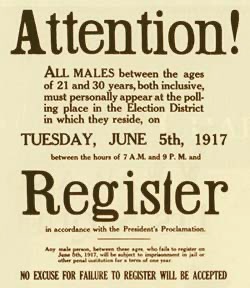
Retaining the draft, a hallmark of American war since the Civil War, is of questionable practical value.
A recent commission report recommended requiring women to register for Selective Service, the foundation of the draft. But from a practical and ethical standpoint many find the notion of drafting women to serve in front-line combat units abhorrent. Beyond that, though, the proposed universal draft makes little sense from an operational perspective.
Forced conscription would be necessary only in dire circumstance, when the military needs masses of troops for units battling at the front. We’re talking conditions similar to World War II, Korea and Vietnam. While today these positions and units are open to women, only a handful qualify. A draft wouldn’t add large numbers to these ranks. It makes little sense to implement a personnel policy that won’t materially contribute to the military’s operational readiness.
Further, the COVID crisis offers a good example of another kind of crisis that may demand large-scale military support. Responding to a deadly epidemic doesn’t allow months and years to train and mobilize raw recruits. Indeed, during the recent outbreak, the military had to suspend basic training.

Attention Register For Draft
The commission’s proposals on Selective Service share a fundamental flaw: they do not address the fundamental issue of how to get the military we need in times of military crisis.
The commission tacitly acknowledges that U.S. policy should focus on volunteer service when it proposes “that the President issue an Executive order expressing that it is the policy of the Federal Government to issue a call for volunteers prior to exercising a draft contingency.” Yet it insists on clinging to an outdated notion the draft still has practical utility.
The U.S. Selective Service is rooted in a model of conscription and mass mobilization ill-suited to present-day realities. Among a long list of reasons why the draft ought to be left out in the cold is the unfortunate fact that the vast majority of American youth could not qualify for military service. Thus, a draft would not produce far more rejects that recruits, a most inefficient way to build numbers.
A Voluntary Draft
If the U.S. has to swell it ranks, it should be looking to a pool of the willing and qualified, not the masses of the “unlucky” whose number came up. One option is to dump selective service in a favor of a strictly volunteer system where young men and women would volunteer to register for call-up if needed and agreed to meet the education, physical and other standards that would qualify them for military service.

James Carafano
This would establish a pool that would be far more useful to military planners, as they would have a much better idea of the size of qualified-ranks that could be quickly called on. Lawmakers could craft a range of benefits for individuals who opted in and qualified for voluntary registry. In addition, this list would provide a better source for focused recruiting efforts.
Another important source of military manpower is the pool of retired and recently-separated military personnel who could called back to active service. These individuals compromise the Individual Ready Reserve (IRR). They constitute a highly qualified and diverse source of military talent that can be brought to the fore to deal in an emergency.
The COVID-19 response offers a good example. In late March, the Army sent out a call to retired soldiers, particularly those in the medical field, asking them to put their uniforms back on and join the fight against the “invisible enemy.” About 800,000 volunteered to come into service. More than 25,000 are currently serving. This demonstrates the powerful potential of this source of manpower to help deal with national emergencies, particularly when we need special expertise in areas ranging from medicine to cyber-security.
The National Guard and Reserves also stand as an additional source of useful manpower for mobilization. Both have been used heavily in the COVID-19 response, and they can be just as efficacious in terms of fielding additional military capabilities.
The combination of voluntary youth service, the National Guard and Reserves, and placing more reliance on the IRR offers a better option than an outdated and inefficient draft.
James Jay Carafano directs the Heritage Foundation’s work on national security and foreign relations.
Major trends and takeaways from the Defense Department’s Unfunded Priority Lists
Mark Cancian and Chris Park of CSIS break down what is in this year’s unfunded priority lists and what they say about the state of the US military.


























